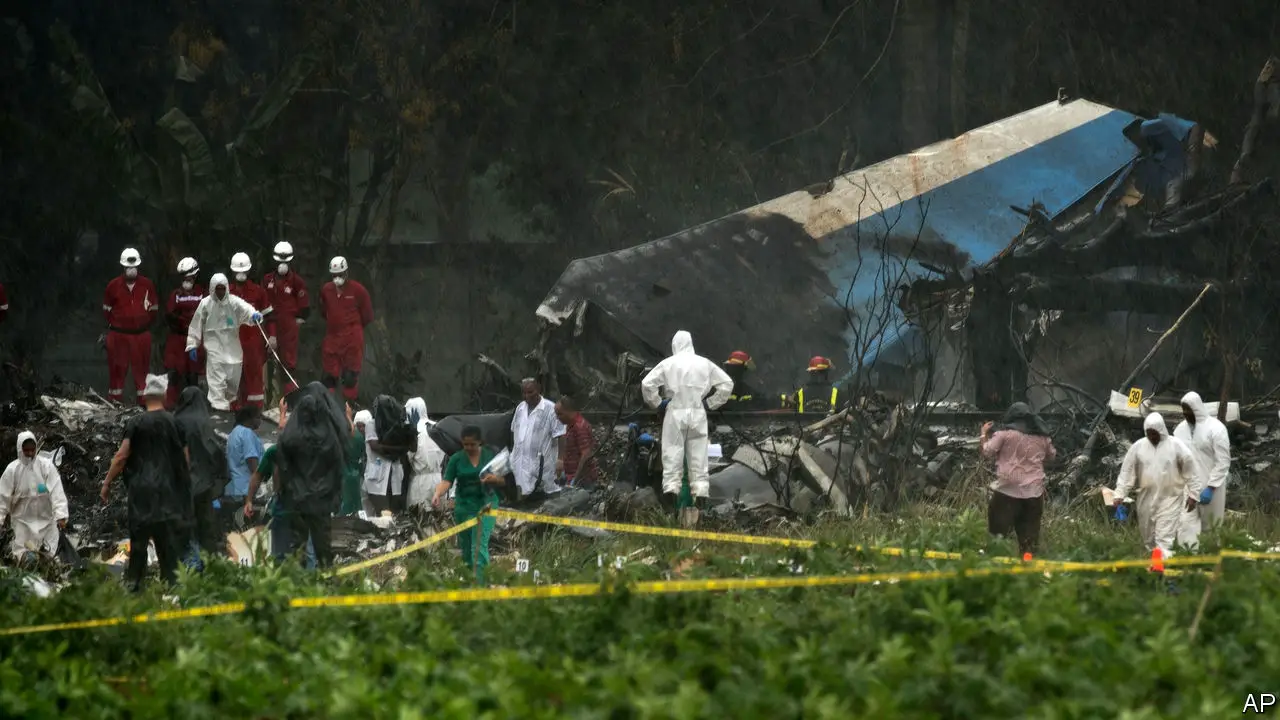Why airliners in Cuba and Iran crash so much
WHEN the dream of a smooth flight turns into the nightmare of an airliner crash, understanding what went wrong is sometimes straightforward. That was the case with a Malaysia Airlines flight which crashed in the summer of 2014, killing 298. This week Dutch and Australian investigators conclusively showed that it was shot down by a missile fired by Russian armed forces. But in other cases it is much harder to apportion blame. Such is the complexity of civil aviation that air-crash investigators spend years sifting through wreckage, recordings and data logs to work out what went wrong. Often technological, human and environmental faults are the main culprits. But another factor can be argued to have caused many of the world’s deadliest air disasters so far this year: economic sanctions.
The crash of a Cuban airliner on May 18th, which killed 112 people, is one example. America’s trade embargo on the island hurts civil aviation as much as it affects the rest of the economy. Cubana, the flag-carrier, is allowed to request American export licences but rarely bothers doing so. The state-owned firm is too poor to buy Western planes outright and international financiers are too cautious to offer it credit. When Cubana’s fleet of Russian planes is grounded for maintenance—as it often is—the airline sub-contracts rival operators. Strapped for cash, it does so as cheaply as possible. The borrowed plane that fell out of the sky this month was 39 years old.
Another American foe, Iran, tried to modernise its airline sector after Barack Obama, then president, agreed in 2015 to remove many of the sanctions imposed on it in return for curbing its nuclear programme. Before the deal, Western manufacturers had been banned from selling planes to Iran. That left the country with one of the oldest civil-aviation fleets in the world—and a safety record to match. The embargo had been enforced more rigidly against Iranian carriers than Cuban ones because of their alleged deployment for military purposes. Iran Air, the flag carrier, ordered 200 planes when it was lifted. But only 11 had been delivered by the time President Donald Trump tore up the deal earlier this month. His secretary of state, Mike Pompeo, is now threatening Iran with the “strongest sanctions in history”.
Iranian carriers will not stop flying in response. Instead, as before, they will turn to the black market for second-hand planes and spare parts. Compromises over safety will be made. Wherever the blame lies, passenger planes will probably continue falling from the sky in Iran more often than elsewhere in the world.
Some foreign-policy experts cite the crashes as proof that America’s sanctions are biting. Yet the human cost of these tragedies should be a cause for concern. Few of those who die on Iran’s airliners have anything to do with the country’s authoritarian rulers. Mr Trump should remember that even before Mr Obama’s nuclear deal, America issued occasional licences to repair some of Iran Air’s fleet. As far as America’s reputation goes, stopping passenger planes from crashing is unlikely to be a bad move.






